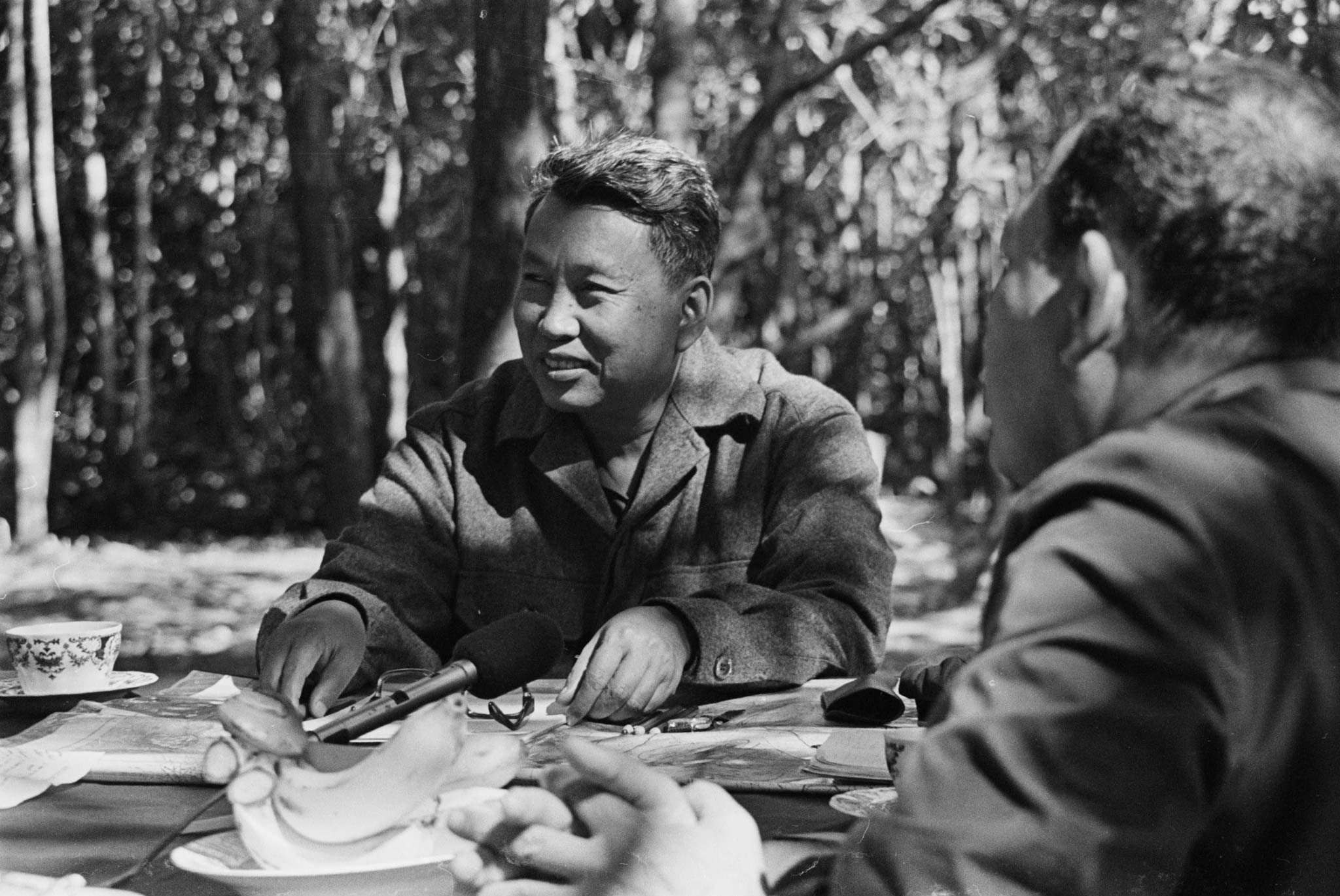
Pol Pot, the infamous leader of the Khmer Rouge in Cambodia, is a figure shrouded in mystery and infamy. His reign of terror from 1975 to 1979 left a devastating impact on the nation, resulting in the deaths of millions of Cambodians. However, there are several extraordinary facts about Pol Pot that go beyond his brutal dictatorship. From his early years to his rise to power and ultimate downfall, these facts offer a unique and often chilling glimpse into the life of one of history’s most ruthless leaders. In this article, we will explore 18 extraordinary facts about Pol Pot, shedding light on his upbringing, ideology, and the lasting legacy he left behind.
Key Takeaways:
- Pol Pot, the leader of the Khmer Rouge, caused the deaths of millions and left a lasting impact on Cambodia by implementing radical agrarian reforms and targeting intellectuals.
- Pol Pot’s regime was overthrown in 1979, but his ideologies continue to influence extremist movements, serving as a harrowing reminder of the horrors of totalitarianism.
Pol Pot was born as Saloth Sar.
Before adopting the name Pol Pot, he was known as Saloth Sar. Born on May 19, 1925, in Prek Sbauv, Cambodia, he would later go on to become one of the most feared dictators in history.
He was educated in France.
Pol Pot received a scholarship to study in France in the 1940s. During his time there, he became involved in leftist political movements and developed his radical ideologies.
Pol Pot formed the Khmer Rouge in 1968.
In 1968, Pol Pot and his followers formed the Communist Party of Kampuchea, also known as the Khmer Rouge. Their aim was to create an agrarian socialist society in Cambodia.
The Khmer Rouge implemented radical agrarian reforms.
Under Pol Pot’s leadership, the Khmer Rouge implemented radical agrarian reforms, forcing urban dwellers to relocate to rural areas and work in labor camps known as “The Killing Fields.
Pol Pot aimed to create a communist utopia.
Pol Pot sought to transform Cambodia into a self-sufficient, classless communist society. He believed in eradicating all traces of capitalism, individualism, and Western influence.
Estimates suggest that 1.7 million people died during his regime.
Pol Pot’s regime was responsible for the deaths of an estimated 1.7 million people, which accounted for approximately 21% of Cambodia’s population at that time.
Intellectuals were systematically targeted.
Pol Pot viewed intellectuals as a threat to his regime and targeted them for execution. Teachers, doctors, and professionals were particularly vulnerable to persecution.
Education and religion were abolished.
During Pol Pot’s regime, education and religion were abolished. Schools and places of worship were closed, and those found practicing religion were severely punished.
Pol Pot’s regime was overthrown in 1979.
After years of terror and devastation, the Khmer Rouge regime was finally overthrown in 1979 by the Vietnamese army. Pol Pot went into hiding but continued to exert influence over the Khmer Rouge for several years.
Pol Pot died in 1998.
Pol Pot lived out his final years in relative obscurity. He died on April 15, 1998, in Anlong Veng, Cambodia, reportedly due to heart failure.
His regime left a lasting impact on Cambodia.
The scars left by Pol Pot’s regime still haunt Cambodia to this day. The country continues to recover from the immense loss of life and the destruction of its social, economic, and political institutions.
Pol Pot’s ideology was influenced by Mao Zedong.
Pol Pot drew inspiration from the communist ideologies of Mao Zedong in China. He admired Mao’s Great Leap Forward and Cultural Revolution policies.
Mass evacuations caused widespread suffering.
Under Pol Pot’s rule, entire cities were evacuated, leading to the displacement and suffering of millions of Cambodians. Families were torn apart, and people were subjected to forced labor and brutal treatment.
Pol Pot was paranoid about internal threats.
Pol Pot was famously paranoid about internal threats to his regime. He purged his own ranks through violent purges known as “The Party Centre” to eliminate any potential dissent.
The international community condemned Pol Pot’s regime.
The international community denounced Pol Pot’s regime and its atrocities, leading to isolation and sanctions on Cambodia. However, it took several years for Pol Pot to face any international accountability for his crimes.
Pol Pot’s legacy lives on in the Extraordinary Chambers in the Courts of Cambodia.
The Extraordinary Chambers in the Courts of Cambodia, also known as the Khmer Rouge Tribunal, was established to bring those responsible for the atrocities committed during Pol Pot’s regime to justice.
The Cambodian Genocide Museum stands as a grim reminder.
The Tuol Sleng Genocide Museum in Phnom Penh, Cambodia, was once the infamous Security Prison 21 (S-21) under Pol Pot’s regime. It serves as a haunting reminder of the atrocities committed by the Khmer Rouge.
Pol Pot’s ideologies continue to influence extremist movements.
Pol Pot’s radical ideologies and the legacy of the Khmer Rouge continue to influence extremist movements in different parts of the world. His reign of terror serves as a harrowing reminder of the horrors of totalitarianism.
Conclusion
In conclusion, learning about Pol Pot and his regime is a harrowing reminder of the atrocities that can be committed by those in power. These 18 extraordinary facts shed light on the horrific actions and ideologies that defined his rule in Cambodia. From the mass killings to the forced labor camps, Pol Pot’s regime left a lasting impact on the country.It is essential to remember and reflect on these facts so that we can strive to prevent such atrocities from occurring in the future. By understanding the history and consequences of oppressive regimes like Pol Pot’s, we can work towards a more just and compassionate world.So let us not forget the millions of lives that were lost and affected during this dark period, and let us continue to fight for human rights, freedom, and dignity for all.
FAQs
Q: Who was Pol Pot?
A: Pol Pot was the leader of the Khmer Rouge, a communist political group, and the ruler of Cambodia from 1975 to 1979. He orchestrated one of the deadliest genocides in history.
Q: How many people were killed under Pol Pot’s regime?
A: It is estimated that approximately 1.7 to 2.5 million people, roughly a quarter of Cambodia’s population, died due to executions, forced labor, and harsh living conditions during Pol Pot’s rule.
Q: What were the main goals of Pol Pot’s regime?
A: Pol Pot aimed to create an agrarian communist society in Cambodia. He sought to eliminate all elements of modernity and establish a classless society based on rural agriculture.
Q: How did Pol Pot implement his vision?
A: Pol Pot implemented his vision through forced evacuations of cities, abolishing currency and private property, repression of intellectual and religious institutions, and the establishment of forced labor camps.
Q: What were the living conditions like under Pol Pot’s regime?
A: The living conditions under Pol Pot’s regime were brutal. People were subjected to forced labor, malnutrition, and extreme violence. Many died from starvation, exhaustion, and disease.
Q: What happened to Pol Pot after his rule?
A: After his regime was overthrown, Pol Pot went into hiding in the jungles of Cambodia. He was arrested in 1997, but died in 1998 before he could stand trial for his crimes.
Pol Pot's ruthless regime left an indelible mark on Cambodia's history. Exploring other significant events and films related to this era can provide deeper insights into the complexities of human nature and the devastating consequences of totalitarian ideologies. Delving into the haunting realities portrayed in "Germany Year Zero" reveals the immediate aftermath of World War II, while "The Killing Fields" offers a poignant glimpse into the Cambodian genocide under Pol Pot's rule. These powerful narratives serve as reminders of the importance of understanding history to prevent such atrocities from occurring again.
Was this page helpful?
Our commitment to delivering trustworthy and engaging content is at the heart of what we do. Each fact on our site is contributed by real users like you, bringing a wealth of diverse insights and information. To ensure the highest standards of accuracy and reliability, our dedicated editors meticulously review each submission. This process guarantees that the facts we share are not only fascinating but also credible. Trust in our commitment to quality and authenticity as you explore and learn with us.


